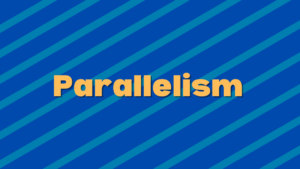What Is Imagery?
Table of Contents
What is imagery?
Imagery refers to language that engages the senses of the reader in order to paint a picture. By using words that evoke the senses of sight, sound, touch, smell, and taste, authors connect with the reader and help them better understand the situation occurring within the writing as well as the characters themselves. It goes beyond simple descriptions such as The building is big. Yes, you can imagine a generic, large building from those words, but it doesn’t create the same kind of understanding or emotion as a more descriptive sentence such as
The building rose like a spire from the concrete streets; just as the spires of the old religious sites pierced the skies to get closer to their deities, the building stood as a monument to the 9-5 work week.
In these kinds of sentences, you get a much clearer idea of the context of the passage. It may be visual cues, how the author or character feels, or otherwise. Imagery is often used in kind with similes and metaphors. In the sentence above, the large building – perhaps a skyscraper – looms over the streets. The author likens its look to that of a spire used in many religious sites and churches. It invokes a sense that the building is larger than just the structure itself; it has some kind of higher purpose. This analogy is further solidified by the use of the word monument to describe it. In a sense, the author claims that the skyscraper is the religious site for those working on a 9 – 5 schedule.
Imagery can be broken down into two broad categories: literal and figurative. Literal imagery is exactly that – literal. The author will use many words to describe exactly what is going on in the scene. This type of imagery may be confined to one sentence or it may go on for multiple sentences and paragraphs. The author will use as many words as they want to get the point across. Figurative imagery is more economical. This is the kind of imagery you see in poetry. The purpose is the same – to paint a picture – but as poems are usually shorter, this kind of imagery relies on fewer words and increased use of similes and metaphors.
“The Snow Fairy (Part I)” – Claude McKayThroughout the afternoon I watched them there,
Snow-fairies falling, falling from the sky,
Whirling fantastic in the misty air,
Contending fierce for space supremacy.
And they flew down a mightier force at night,
As though in heaven there was revolt and riot,
And they, frail things had taken panic flight
Down to the calm earth seeking peace and quiet.
In the excerpt above, each line of the poem uses imagery to paint the picture of snow flurries – snow fairies – falling from the sky with mighty force. The author describes them as falling more fiercely at nighttime as if they’re fighting each other for space. The snow is falling with such fierceness that the author imagines that there was some sort of riot that occurred in the heavens, and the snow fairies have tried to escape in a panic, fighting each other for their chance to escape. From the author’s point of view, what seems to be a majestic whirling is a battle for safety and escape.
Imagery can further be broken down into categories based on what they describe: Visual (Sight), Auditory (Sound), Tactile (Touch), Olfactory (Smell), Gustatory (Taste), Kinesthetic (Motion), and Organic (Internal sensations, emotions). This is how most people talk about imagery – descriptions that talk about the five senses.
What is the point?
Authors use imagery to further connect with the reader. The use of imagery brings a scene to life and makes the work more interesting as a whole. It helps the reader relate to the character or characters and helps them understand how the character is feeling, thinking, and acting as well as the state of the world around them. It allows the reader to step through the page into a new world and experience the sensations of the characters from their point of view. Imagery can be used to highlight certain scenes and emotions, making them easier to recall to the reader or imbuing the scene with a sense of importance. Imagery helps scenes stand out and helps make characters more memorable.
How to recognize imagery
Imagery is much more descriptive than using a few adjectives here and there. One way to recognize imagery is that the author will go into more detail, sometimes talking for multiple sentences about a particular scene, feeling, or sensation. Imagery often engages the five senses: sight, sound, touch, smell, and taste, but it can also go into detail describing a character’s emotions, internal sensations (like a rumbling stomach), or the motion that is occurring around the character(s) as the scene plays out. Look out for comparisons such as similes and metaphors, use of many adjectives, especially those that relate to the five senses, personification, and emotion words.
Examples of imagery
“The Thing in the coffin writhed; and a hideous, blood-curdling screech came from the opened red lips. The body shook and quivered and twisted in wild contortions; the sharp white teeth champed together till the lips were cut, and the mouth was smeared with a crimson foam. But Arthur never faltered. He looked like a figure of Thor as his untrembling arm rose and fell, driving deeper and deeper the mercy-bearing stake, whilst the blood from the pierced heart welled and spurted up around it. His face was set, and high duty seemed to shine through it; the sight of it gave us courage, so that our voices seemed to ring through the little vault.”
Dracula – Bram Stoker
In the above, we can picture the scene as the character, Arthur, stabs the vampire with a stake. The descriptions give us a sense of the motion happening within the scene – a struggle between vampire and human as Arthur fights to kill the vampire. We can picture his resolution to carry through with the act as the author uses words like “untrembling” and “duty.” We can see the vampire struggling to survive with the use of the words “writhed,” and “shook,” and “contortions.” From this snippet, we get an idea of the relationship between the characters, what is happening, how it is happening, and the emotions therein.
“I smelled Los Angeles before I got to it. It smelled stale and old like a living room that had been closed too long. But the colored lights fooled you. The lights were wonderful. There ought to be a monument to the man who invented neon lights.“
The Little Sister – Raymond Chandler
This one kind of makes you scrunch up your nose, right? It’s kind of gross, and the fact that you reacted shows that the words are doing a proper job at showcasing the imagery. You can imagine a city so stinky that you can smell it from afar. You get an idea of that stale smell, the visual overload. The mix of grossness filled with wonder from the character as they gaze at the beautiful lights – “There ought to be a monument to the man who invented neon lights.” You can picture the kind of city that has these neon lights or at least the section of town the character may be in. It’s a brief excerpt, but it packs a lot of power.
“Do you ever feel like a plastic bag
Drifting through the wind, wanting to start again?
Do you ever feel, feel so paper-thin
Like a house of cards, one blow from cavin’ in?
Do you ever feel already buried deep?
Six feet under screams, but no one seems to hear a thing
Do you know that there’s still a chance for you?
‘Cause there’s a spark in you
…
“Firework” – Katy Perry
‘Cause baby, you’re a firework”
In this example from the song “Firework,” Katy Perry paints a picture of feeling like a plastic bag – drifting through the wind with no direction or control in one’s life. She uses personification or metaphor to imagine you – the plastic bag – wanting to start its life over. In so few words, there’s a strong sense of powerlessness and hopelessness within the first two lines. Perry continues the metaphor of the wind as the external pressures in our lives pushing on us with such force that it may topple us like a house of cards. It continues the feelings of desperation and adds a sense of fragility. She further adds to this feeling in the next two lines, using the words “buried deep” to add to the sense of hopelessness and being overwhelmed. “Six feet under” as if already in the grave, no one able to hear you calling for help. It’s at this point the tone of the song changes, you can hear it in the music but also in the words “There’s a spark in you…you’re a firework.” The hope comes from within – a dazzling glory that makes others watch in awe as the spark ignites within you.
Now that you have a better idea of what imagery is and how to identify it, give it a shot in some of the things you like to read. Imagery works best in text that doesn’t have a lot of pictures accompanying it because the words need to do more work to help the reader imagine what is going on. It doesn’t matter whether it’s non-fiction or fiction, a novel, magazine, or news. Pick up something and read it today!






